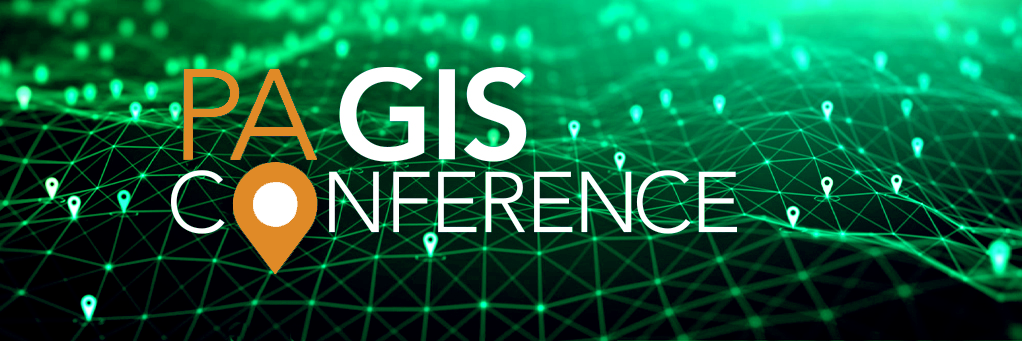|
Session Themes
When submitting a proposal, you may choose to submit to a specific session theme, or you may elect to submit outside of the listed theme sessions.
The deadline for oral submissions is January 11, 2026.
The deadline for poster and map submissions is March 31, 2026.
- GIS Management
- Infrastructure and Utilities
- Engaging the Public
- Public Safety, 911, and Crime Mapping
- Innovative Computational Solutions
- Geoscience and Environmental Applications
- The Everything Bagel
- Micro-Workshops (This is listed as a separate presentation type when you submit your proposal)
GIS Management
This track is aimed towards helping GIS Managers. Whether you are a seasoned professional, or new to the role, presentations in this session will provide you some valuable insight and lessons learned from both the public and private sectors. We encourage the submission of abstracts for presentations highlighting methods and tactics used by GIS managers in public and private sectors.
Infrastructure and Utilities
Utilities are challenged with increased regulatory reporting requirements regarding their field assets. GIS applications and approaches have enabled operators to meet these new challenges for data analysis, field inspections, data management, quality control, outreach and regulatory reporting. The recent EPA Lead and Copper rule is just one example of how GIS has play the key role in the operations of water utilities by using or deploying Machine Learning, Survey123, the HUB, predictive analysis and Dashboards. Another such example is the application of stormwater fees, where GIS is being used to better understand the percent cover of impermeable surfaces. Data management workflows require a unique approach to suite the challenges facing each operation. Submit your abstract and join this discussion at the PA GIS Conference to learn more about how communities in Pennsylvania are making GIS work for them in the infrastructure and utilities space.
Engaging the Public
Cartographers, GIS analysts, and map application developers engage the public in all sorts of ways; however, engaging the public has its own challenges, such as ensuring accessibility. GIS products, such as maps, websites, and tools, are not always designed with all users in mind. We seek presentations that can highlight the design and thought processes that went into trying to engage the public with tools. Lessons can be learned from reflecting on and sharing our own experiences, successes, and failures. Submit your abstract and join this discussion at the PA GIS Conference to share how you are making your GIS work for or with the public.
Public Safety, 911, and Crime Mapping
Public safety and emergency response organizations have been early adopters of GIS and spatial technologies. GIS supports all facets of public safety and emergency response including 9-1-1 dispatch, smart policing, planning and response for mass casualty scenarios, natural disaster risks and response, and infrastructure failures. With the increase in data and expansion of the technology into the 3D realm, the importance of GIS in the public safety and emergency response arenas will continue to grow in the coming years. In Pennsylvania, Next Generation 9-1-1 will use GIS to make use of those emerging technologies and expand the capabilities of the organizations serving the public. In recent years, crime mapping and analysis has incorporated spatial data analysis techniques that add statistical rigor and address inherent limitations of spatial data, including spatial autocorrelation and spatial heterogeneity. Spatial data analysis helps one analyze crime data and better understand why and where crime is occurring. This session is seeking proposals for presentations centered around the theme of Public Safety, Emergency Response, NG 9-1-1, and/or crime mapping.
Innovative Computational Solutions
We invite thought leaders, innovators, and practitioners to submit presentations that showcase how innovative computational solutions, such as AI, digital twins, deep learning, and other techniques, are driving breakthroughs in geospatial problem-solving, feature extraction, automation, etc. We seek contributions that highlight real-world case studies, technical advancements, and visionary approaches to integrating these technologies within geospatial workflows. If you're pushing the boundaries of geospatial science through AI and computational innovations, we encourage you to submit a presentation abstract!
Geoscience & Environmental Applications
GIS is one of the most useful tools in analyzing the Earth and the impact human activity has on the planet. This is a broad session covering the ways in which GIS and remote sensing can be used to research, evaluate, and problem solve in the geo and environmental sciences. There are an array of topics and specialties that fit into this session. Among other fields, presentations may cover work being done in: Earth and Environmental Science, Environmental Protection and Remediation, Mining, Archaeology, Seismology, Hydrology, Energy Exploration, Geology, Marine Science, and Engineering. This session seeks presentations focused on remote sensing and GIS as applied to geoscience and environmental analysis in Pennsylvania.
The Everything Bagel
This track is meant to house presentations that do not seem to fit in any of the other available tracks. We welcome and encourage the submission of abstracts for presentations from the broad spectrum of geospatial industries and data analysis. Please note, coordinators may group common presentation themes into new sessions depending on the number of submitted presentations.
Micro-Workshops
This track is meant to house hands-on learning experiences. We request that we keep your workshops under an hour, but this session type is a flexible time slot ideal for experiential learning with VR, AI and other hands-on applications. Micro-workshops should not be entirely lecture presentation format, and MUST include hands-on learning experiences.

